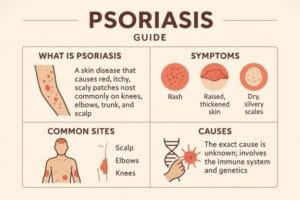Chikungunya: The Bent-Over Fever Spreading Globally
Table of Contents
Chikungunya: The Bent-Over Fever Spreading Globally
The chikungunya virus, a name derived from an African dialect meaning “to become contorted” or “bent over,” brings excruciating joint pain to those infected. I know what many of you are thinking: is this another mosquito-borne disease? Yes, it is, and it demands our urgent attention. We find ourselves in an era where global health challenges multiply with startling velocity, making understanding such illnesses critically important. Today, I want us to explore precisely how the chikungunya virus operates, what it does to the body, and what the world is doing to combat it, especially with recent developments highlighting both progress and unexpected setbacks. This information is not just for medical professionals; it is for anyone who travels, lives in affected regions, or simply wishes to grasp the intricate threats our interconnected world faces.
Chikungunya Virus: What We Need to Understand
Chikungunya represents a viral illness transmitted by mosquitoes; one might envision it as a tropical nuisance that has escalated into a global health concern. The virus, commonly abbreviated as CHIKV, belongs to a family known as alphaviruses. Its name itself vividly describes a primary symptom: the intense, debilitating joint pain that can cause individuals to stoop. This virus has transcended its historical confines, transforming from a regional problem predominantly found in Africa and Asia into a widespread headache for public health authorities across continents.
Understanding the fundamental mechanics of chikungunya virus transmission reveals why controlling its spread poses such a persistent challenge. Female Aedes aegypti and Aedes albopictus mosquitoes serve as the primary carriers, transmitting the virus when they feed on an infected person and then subsequently bite an uninfected individual. What complicates this dynamic is that these same mosquito species also transmit other notable viruses, such as dengue and Zika. This shared vector landscape presents considerable diagnostic and public health difficulties, often leading to co-infections or mistaken initial diagnoses. We must recognize these mosquitoes are primarily daytime biters, which means personal protective measures need consistent application, not just at dusk or dawn.
Chikungunya’s Global March: A Historical Account
The chikungunya virus first emerged onto the scientific radar in present-day Tanzania, identified during an outbreak between 1952 and 1953. For decades, the virus largely maintained a “sylvatic cycle” in Africa and Asia, circulating quietly between monkeys and forest-dwelling mosquitoes. However, this subdued existence changed dramatically.
Around 2004-2005, a major resurgence initiated in Kenya. A tiny genetic tweak in the virus’s E1 glycoprotein made it exceptionally adept at spreading via the aggressive Aedes albopictus, or Asian tiger mosquito, in addition to its traditional partner, Aedes aegypti. This adaptation proved pivotal, unlocking a new chapter of extensive global dissemination. What followed were massive outbreaks: Réunion Island recorded an estimated 266,000 cases in 2005 alone, a staggering number relative to its population. Then, India experienced over a million cases in 2006, demonstrating the virus’s heightened transmissibility.
The chikungunya virus then began its journey beyond its established territories. In 2007, it appeared in Europe, with local transmission reported in Italy. By 2013, it made its debut in the Americas, rapidly becoming widespread across the Caribbean and subsequently Central and South America. Fast forward to 2025, and the World Health Organization (WHO) warns of new epidemics, with substantial case numbers reported in places like China’s Guangdong province. International travel stands as a major accelerant in this relentless global tour, bringing the virus to new, susceptible populations and environments where competent mosquito vectors already reside.
Chikungunya Symptoms: The Real Impact on Your Body
When an infected mosquito bites, the chikungunya virus initiates a sequence of events, with symptoms typically manifesting within 2 to 12 days, often clustering around 3 to 7 days post-exposure. A significant majority, about 85%, of infected individuals will experience symptoms.
The primary characteristic, the “star of the show,” involves an abrupt onset of high fever, usually soaring to 102°F or more, coupled with agonizing joint pain. This pain is frequently symmetrical, affecting both sides of the body—think both knees or both wrists—and can persist for months or even years, evolving into a debilitating condition termed “chronic chikungunya arthritis.” This persistent joint inflammation can severely impact daily living, making even simple movements profoundly difficult. My uncle told me about his experience with chikungunya; he described it as a deep, aching misery that seemed to steal his mobility for months. The joint pain, he said, was unlike anything he had ever known, making simple tasks a monumental struggle.
Other unwelcome guests accompanying chikungunya fever include:
- Muscle pain
- Headaches
- A distinctive rash, often appearing on the trunk, face, palms, and soles
- Joint swelling
- Profound fatigue
- Nausea
- Red eyes (conjunctivitis)
Accurate diagnosis presents a challenge because chikungunya loves to mimic other mosquito-borne infections like dengue and Zika, which share the same mosquito thugs. This overlap often necessitates comprehensive testing to differentiate between the viruses. While fatalities from chikungunya are rare, the illness can hit harder for tiny babies, older folks—especially those over 65—and anyone with existing health issues such as diabetes, high blood pressure, or heart problems. These vulnerable groups face a higher risk of severe disease and potential complications.
Aedes aegypti mosquito, a primary vector for chikungunya.
Microscopic representation of the Chikungunya virus.
Stopping Chikungunya Transmission: Our Prevention Plan
Protecting against chikungunya virus hinges entirely on avoiding mosquito bites and meticulously controlling mosquito populations. The primary culprits remain the female Aedes aegypti and Aedes albopictus mosquitoes. We must remember these insects are mostly daytime biters; do not let your guard down during daylight hours, as their activity peaks mid-morning and late afternoon.
This virus does not spread through casual person-to-person contact like hugs, sneezes, or shared meals. However, an infected person can pass the virus to a mosquito if bitten during the first week of illness, when viral loads in the blood are highest. That mosquito then becomes a carrier, capable of transmitting the virus to someone else. Furthermore, pregnant mothers can, in rare instances, transmit the virus to their babies during birth.
Your mission, should you choose to accept it, for chikungunya prevention:
- Slather on that EPA-registered insect repellent. Products containing DEET, picaridin, IR3535, or oil of lemon eucalyptus provide effective protection.
- Rock long sleeves and pants, especially during the day, to minimize exposed skin.
- Treat your outdoor gear and clothing with permethrin. This insecticide acts as a powerful deterrent.
- Mosquito-proof your living space by ensuring windows and doors have intact screens and utilizing air conditioning.
- The most significant step: DRAIN all standing water around your home. Tires, buckets, flowerpots, pet dishes, bird baths, trash cans – they are all potential mosquito nurseries. Empty and scrub these containers weekly to disrupt the mosquito life cycle.
Public health strategies extend these individual efforts to a community level, focusing on integrated vector management. This fancy term means throwing every available tool at those mosquitoes, from cleaning up breeding sites to strategic insecticide spraying, all aimed at reducing mosquito populations and breaking the chain of transmission for chikungunya virus.
Chikungunya Treatment: Managing the Illness
Here is the challenging truth about chikungunya treatment: there is no specific antiviral cure available today for chikungunya virus infection. Our current game plan revolves around supportive care, aimed at alleviating symptoms and ensuring comfort as the body fights off the virus.
Doctors usually recommend a straightforward approach:
- Rest: Adequate rest allows your body to dedicate its energy to recovery.
- Fluids: Drinking plenty of liquids—water, coconut water, soups, or fruit juices—is crucial to prevent dehydration, especially with fever.
- Pain and Fever Relief: Medications are prescribed to tackle the fever and pain.
- Acetaminophen (paracetamol) is often the first choice. Why? Because chikungunya symptoms closely resemble dengue fever, and if it is dengue, nonsteroidal anti-inflammatory drugs (NSAIDs) like ibuprofen or aspirin could actually worsen bleeding. Better safe than sorry, always.
- Once dengue is ruled out, NSAIDs or other analgesics might be recommended for acute fever and joint pain.
For that lingering, chronic joint pain, which can persist for months or even years, your doctor might suggest a more targeted approach:
- NSAIDs: These can help manage pain and inflammation in the chronic phase.
- Corticosteroids: Sometimes prescribed, including topical creams, to reduce severe inflammation. However, their use, particularly in the acute phase, remains a subject of ongoing debate within the medical community due to potential side effects and unclear efficacy.
- Physical Therapy: This can be immensely helpful in regaining mobility and reducing stiffness.
- Disease-Modifying Anti-Rheumatic Drugs (DMARDs): For persistent, severe chronic chikungunya arthritis, some individuals may explore these medications, typically used for autoimmune conditions, under strict medical supervision.
Public health professionals worldwide champion “integrated vector management” strategies. This comprehensive tactic aims to suppress mosquito populations by eliminating breeding sites, applying larvicides to water sources, and strategically spraying insecticides to reduce adult mosquitoes. Such concerted efforts are vital in areas affected by the chikungunya virus.
Chikungunya Vaccine Landscape: Hopes and Hurdles
The development of a chikungunya vaccine has unfolded as a saga of both significant achievement and unexpected challenges. We have seen approvals for vaccines like IXCHIQ and VIMKUNYA in places such as the United States and Europe. These were initially hailed as game-changers, offering a new layer of protection, particularly for travelers to endemic areas and laboratory workers who face higher exposure risks to the chikungunya virus.
However, a dramatic turn of events occurred. In August 2025, the U.S. Food and Drug Administration (FDA) actually suspended the license for IXCHIQ. The reason? “Serious safety concerns.” This live-attenuated vaccine, which contains a weakened form of the virus, reportedly caused severe chikungunya-like illnesses, necessitating hospitalizations, and tragically, was linked to one death directly attributable to vaccine-induced brain inflammation, especially impacting older adults. This revelation sparked a substantial debate regarding vaccine efficacy and safety, particularly when initial approvals were based on immune response rather than direct clinical prevention of disease in large outbreaks. A traveler friend, before the latest news broke, mentioned getting a chikungunya vaccine for an upcoming trip. I remember them saying how relieved they felt, thinking they were fully protected. Now, hearing about the FDA’s decision for Ixchiq, a different kind of uncertainty settles in; it reveals the intricate balance between rapid solutions and the enduring necessity of exhaustive safety validation.
The other major contender, VIMKUNYA, a virus-like particle (VLP) vaccine, received FDA approval for individuals aged 12 and above in February 2025. This vaccine platform mimics the virus without containing infectious genetic material, aiming to elicit an immune response with a potentially different safety profile. Despite the setback with IXCHIQ, other vaccine candidates utilizing various platforms—including mRNA technology and virus-like particles—remain in the pipeline, showing promise. The journey to a safe, universally accessible, and unequivocally effective chikungunya vaccine continues, punctuated by the critical need for exhaustive validation beyond initial immunological markers.
The Future Fight Against Chikungunya Virus
Scientists are far from giving up on chikungunya virus. Research is booming, propelling us toward a more comprehensive understanding and, hopefully, more effective interventions. Efforts span various fronts, from understanding the subtle mechanisms by which the virus infiltrates our cells to predicting future outbreaks.
One promising area involves understanding how the virus sneaks into cells. Researchers have identified molecules like Mxra8 as crucial for this process, presenting potential targets for entirely new drug therapies. Imagine a treatment that could block the virus at its entry point, fundamentally altering the course of infection.
The hunt for specific antiviral drugs is intensifying. Several promising compounds are in early development. For example, researchers at Oregon Health & Science University (OHSU) are working on a potential “first-in-class” antiviral drug. This experimental compound, a small molecule inhibitor, aims to reduce viral loads by a thousandfold. The team envisions human trials by late 2027, striving to develop an oral pill that could significantly mitigate the effects of chikungunya infection.
Global health organizations play a pivotal role in this ongoing struggle. Groups like the WHO and the Pan American Health Organization (PAHO) are launching significant initiatives. These efforts aim to:
- Ramp up surveillance: Establishing more robust systems to track outbreaks and monitor disease trends in real-time.
- Improve diagnoses: Enhancing laboratory capacities and clinical awareness to ensure accurate and timely identification of chikungunya virus cases, distinguishing it from other similar diseases.
- Coordinate prevention efforts worldwide: Fostering international collaboration to implement consistent and effective mosquito control strategies.
The urgency of these initiatives is magnified by climate change, which helps mosquitoes expand their geographical turf, bringing chikungunya to previously unaffected regions. Furthermore, new technological approaches, such as the Wolbachia method, are being explored. This innovative technique involves introducing Wolbachia bacteria into mosquito populations, which makes the mosquitoes less able to transmit viruses like chikungunya. These multifaceted approaches symbolize a determined global effort to stay ahead of the swarm.
Staying Ahead of the Swarm: Protecting Against Chikungunya
The chikungunya virus presents a formidable, evolving challenge to global health. While the acute phase of the illness can be excruciating, the potential for chronic joint pain underscores its lasting impact on individuals and public health systems. We have explored the virus’s origins, its global spread, the distinctive symptoms it inflicts, and the essential strategies for prevention. Furthermore, we have grappled with the complexities surrounding chikungunya treatment and the turbulent, yet promising, landscape of vaccine development.
The recent pause and subsequent suspension of the IXCHIQ vaccine’s license highlight the scientific community’s unwavering commitment to safety and rigorous evaluation, even when facing urgent public health needs. This demonstrates a crucial lesson: progress is not always linear, and patient validation remains paramount. Despite these hurdles, ongoing research in antiviral drugs, innovative vector control methods, and diverse vaccine platforms offers significant hope. Global initiatives are actively bolstering surveillance and prevention, recognizing that a unified, informed response is our strongest defense.
Protecting ourselves and our communities against the chikungunya virus requires continuous vigilance and proactive measures. Stay informed about local health advisories, maintain diligent personal protection against mosquito bites, and support community efforts in vector control. Your choices matter in limiting the spread of this illness. Together, through sustained research, evolving public health strategies, and careful application of new tools, we are better equipped than ever to fight back against chikungunya.
Frequently Asked Questions About Chikungunya Virus
What is the chikungunya virus?
Chikungunya virus is an illness transmitted to humans primarily through the bite of infected Aedes aegypti and Aedes albopictus mosquitoes. The name means “to become contorted” or “bent over,” reflecting the severe joint pain that is a hallmark symptom.
How does chikungunya spread?
The chikungunya virus spreads when a mosquito bites an infected person, then carries the virus and bites an uninfected individual. It does not spread directly from person to person through casual contact.
What are the main chikungunya symptoms?
The main symptoms typically appear 2 to 12 days after a bite and include sudden high fever (102°F or more) and severe, often symmetrical, joint pain. Other symptoms can involve muscle pain, headaches, a rash, joint swelling, fatigue, nausea, and red eyes.
Is there a specific chikungunya treatment?
No, there is currently no specific antiviral treatment for chikungunya virus infection. Treatment focuses on supportive care, including rest, fluids, and medications like acetaminophen to manage fever and pain.
Are chikungunya vaccines safe and effective?
Two chikungunya vaccines, IXCHIQ and VIMKUNYA, have received regulatory approvals. However, the U.S. FDA suspended the license for IXCHIQ in August 2025 due to serious safety concerns, including severe chikungunya-like illnesses and deaths, particularly in older adults. VIMKUNYA, a different type of vaccine, remains approved for ages 12 and up. The balance of efficacy and safety remains under close scrutiny.
How can I protect myself from chikungunya?
Protect yourself by avoiding mosquito bites. Use EPA-registered insect repellent, wear long sleeves and pants, treat clothing with permethrin, ensure windows and doors have screens, and eliminate all standing water around your home, which are prime mosquito breeding sites.
Can chikungunya have long-term effects?
Yes, while most people recover within a couple of weeks, a significant portion of those infected can experience persistent joint pain, sometimes lasting for months or even years. This condition is known as chronic chikungunya arthritis.
For more information, visit the CDC Chikungunya page.














Post Comment